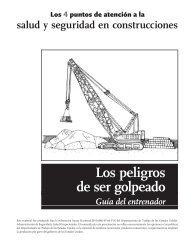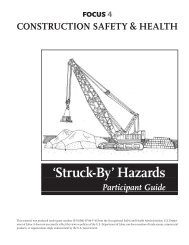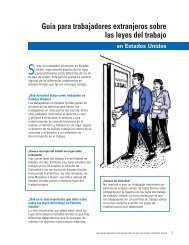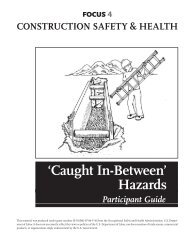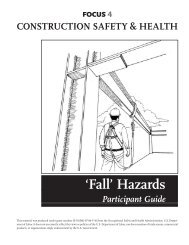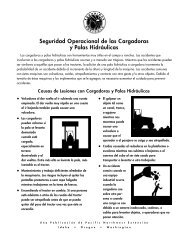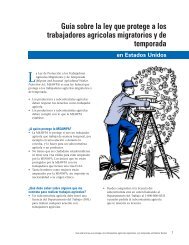Day Labor study 2006.pdf - National Council for Occupational Safety ...
Day Labor study 2006.pdf - National Council for Occupational Safety ...
Day Labor study 2006.pdf - National Council for Occupational Safety ...
You also want an ePaper? Increase the reach of your titles
YUMPU automatically turns print PDFs into web optimized ePapers that Google loves.
AppendixData Collection ProceduresA survey of day laborers, a highly visible, yet largely unknown populationrequires creative research approaches. Three factors make the fielding of a surveychallenging.1. <strong>Day</strong> laborers are employed by many different employers <strong>for</strong> a variety of jobsranging in length from several hours to several weeks. As a result, the statusof a worker in the day-labor market constantly fluctuates from looking <strong>for</strong>work (as a day laborer) to working in the <strong>for</strong>mal or in<strong>for</strong>mal economy. Thismeans that hiring sites, depending on the season, the current demand <strong>for</strong>day-labor work, and the time of day may not provide the most accurate countof day laborers.2. Hiring sites, while usually quite visible, are nevertheless difficult to keep trackof in their totality. New sites emerge, old sites disappear and some sites aredifficult to find.3. <strong>Day</strong> labor may be a temporary occupation. Some day laborers may be doingthis type of work as a temporary holdover from a layoff or firing.Alternatively, workers in this market may be holding part- or full-timeemployment in the <strong>for</strong>mal labor market and undertaking day-labor work tosupplement their wages. Others may be using day-labor work as a steppingstone to regular employment in the <strong>for</strong>mal labor market. The point is that atany given time, who is and who is not a day laborer is fluid.To address these issues we sought to identify as many day-labor sites as possible,develop a random sampling frame and employ a screening mechanism that would allowus to identify day laborers. Prior to implementing our survey we initially identified morethan 500 sites in 46 Metropolitan Statistical Areas (MSAs).Site IdentificationWe spent five months (November 2003-March 2004) identifying hiring sites andday-labor populations in the cities in each of the MSAs selected in our sample. Severalprocedures were used to identify day-labor hiring sites. First, we contactedcommunity-based organizations, advocacy groups, churches, home improvement stores,police departments, city planning departments and merchants, as well as conductedInternet searches (i.e., looked at newspapers, websites, articles) to identify as many sitesas possible within each MSA. We identified more than half of the hiring sites using thismethod.Because our <strong>study</strong>’s methodology required that we verify the presence of daylaborers in each of MSA, we undertook a scouting exercise. We also needed to confirmour data sources, particularly in those MSAs in which we were not confident that27



